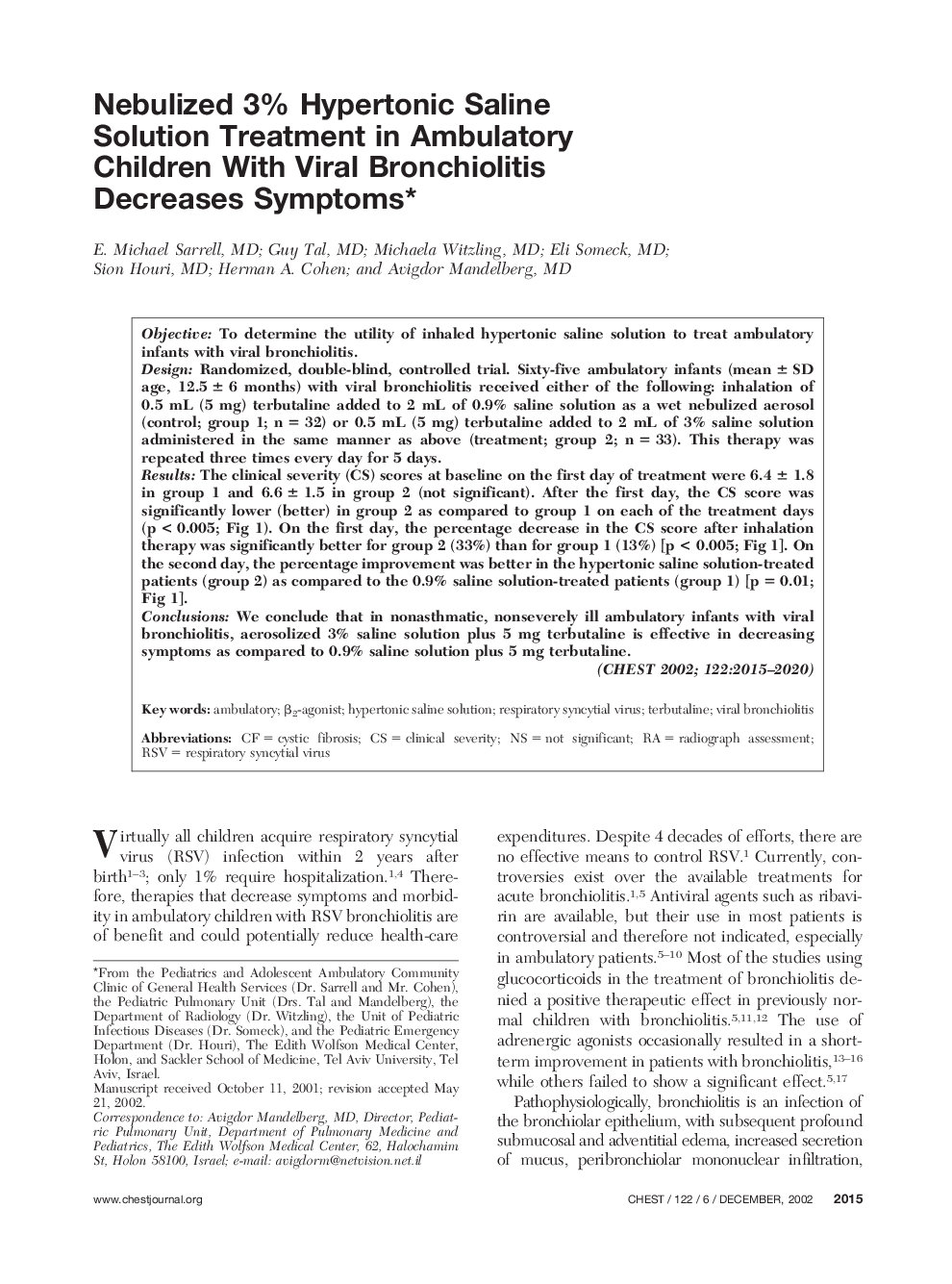| Article ID | Journal | Published Year | Pages | File Type |
|---|---|---|---|---|
| 2907328 | Chest | 2015 | 6 Pages |
ObjectiveTo determine the utility of inhaled hypertonic saline solution to treat ambulatory infants with viral bronchiolitis.DesignRandomized, double-blind, controlled trial. Sixty-five ambulatory infants (mean ± SD age, 12.5 ± 6 months) with viral bronchiolitis received either of the following: inhalation of 0.5 mL (5 mg) terbutaline added to 2 mL of 0.9% saline solution as a wet nebulized aerosol (control; group 1; n = 32) or 0.5 mL (5 mg) terbutaline added to 2 mL of 3% saline solution administered in the same manner as above (treatment; group 2; n = 33). This therapy was repeated three times every day for 5 days.ResultsThe clinical severity (CS) scores at baseline on the first day of treatment were 6.4 ± 1.8 in group 1 and 6.6 ± 1.5 in group 2 (not significant). After the first day, the CS score was significantly lower (better) in group 2 as compared to group 1 on each of the treatment days (p < 0.005; Fig 1). On the first day, the percentage decrease in the CS score after inhalation therapy was significantly better for group 2 (33%) than for group 1 (13%) [p < 0.005; Fig 1]. On the second day, the percentage improvement was better in the hypertonic saline solution-treated patients (group 2) as compared to the 0.9% saline solution-treated patients (group 1) [p = 0.01; Fig 1].ConclusionsWe conclude that in nonasthmatic, nonseverely ill ambulatory infants with viral bronchiolitis, aerosolized 3% saline solution plus 5 mg terbutaline is effective in decreasing symptoms as compared to 0.9% saline solution plus 5 mg terbutaline.
